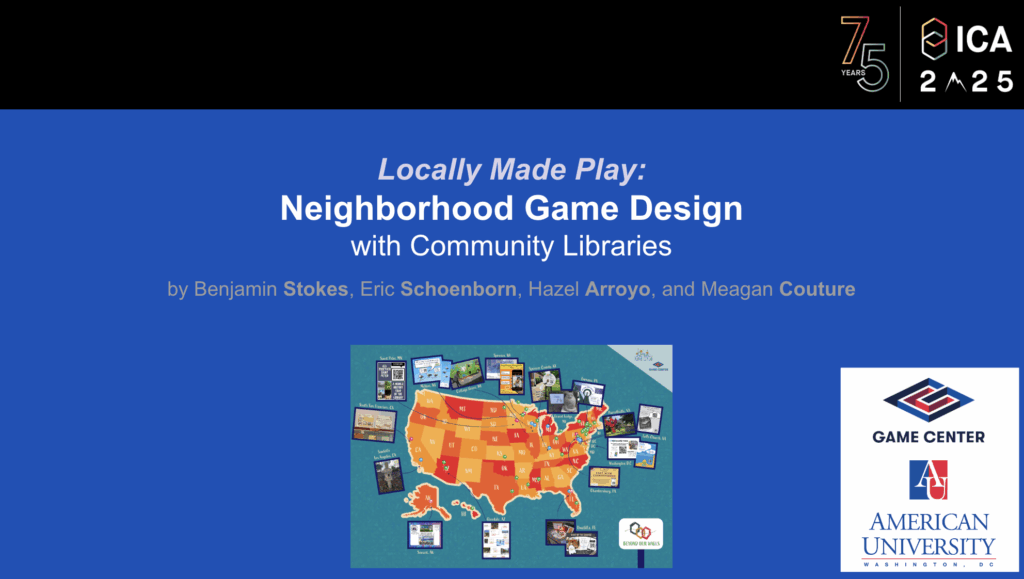
On Friday, June 13th, we presented to the Game Studies division at the 75th annual International Communication Association (ICA) conference in Denver, Colorado. It is the largest international conference for researchers on communication – and includes urban communication and game studies. Our presentation, titled Locally Made Play: Neighborhood Game Design with Community Libraries, co-authored by Benjamin Stokes, Eric Schoenborn (me), Hazel Arroyo, Meagan Couture, presented findings about the Playful City Lab’s research co-designing low-tech neighborhood games with more than 50 local libraries across the United States over the past several years (see EBOW: Engaging Beyond Our Walls).
In our research to build stronger places, with libraries as hubs for storytelling and story games, we asked several questions to understand our co-designers better, librarians with limited resources.
- RQ 1: For community leaders, what are the uses and gratifications of game design after co-designing a basic game for their neighborhood?
- RQ 2: How might community leaders define ‘game design’ to allow for their own participation, based on their experience of launching a playful experience or game?
- RQ 3: What design principles and framing language might help community leaders to join in the co-design of games for their own neighborhoods and communities?
With data from over 20 interviews and 3 years of field notes, our analysis draws from Framing theory, Most Significant Change methods, and Uses and Gratifications theory to answer these questions. Some preliminary findings from our analysis we shared with the “high-density” session include the librarians finding joy largely in the process of making neighborhood games we identified as joy as makers and joy as catalysts within their communities. Our research also surfaced a narrative-first approach to framing these projects as “story games,” which helped us overcome some of what we consider to be problematic framing of teaching STEM through game design and framing the target audiences of gamer culture and traditional game audiences.
We look forward to sharing more findings from our research with libraries and community organizations, as we continue to flesh out our analysis.